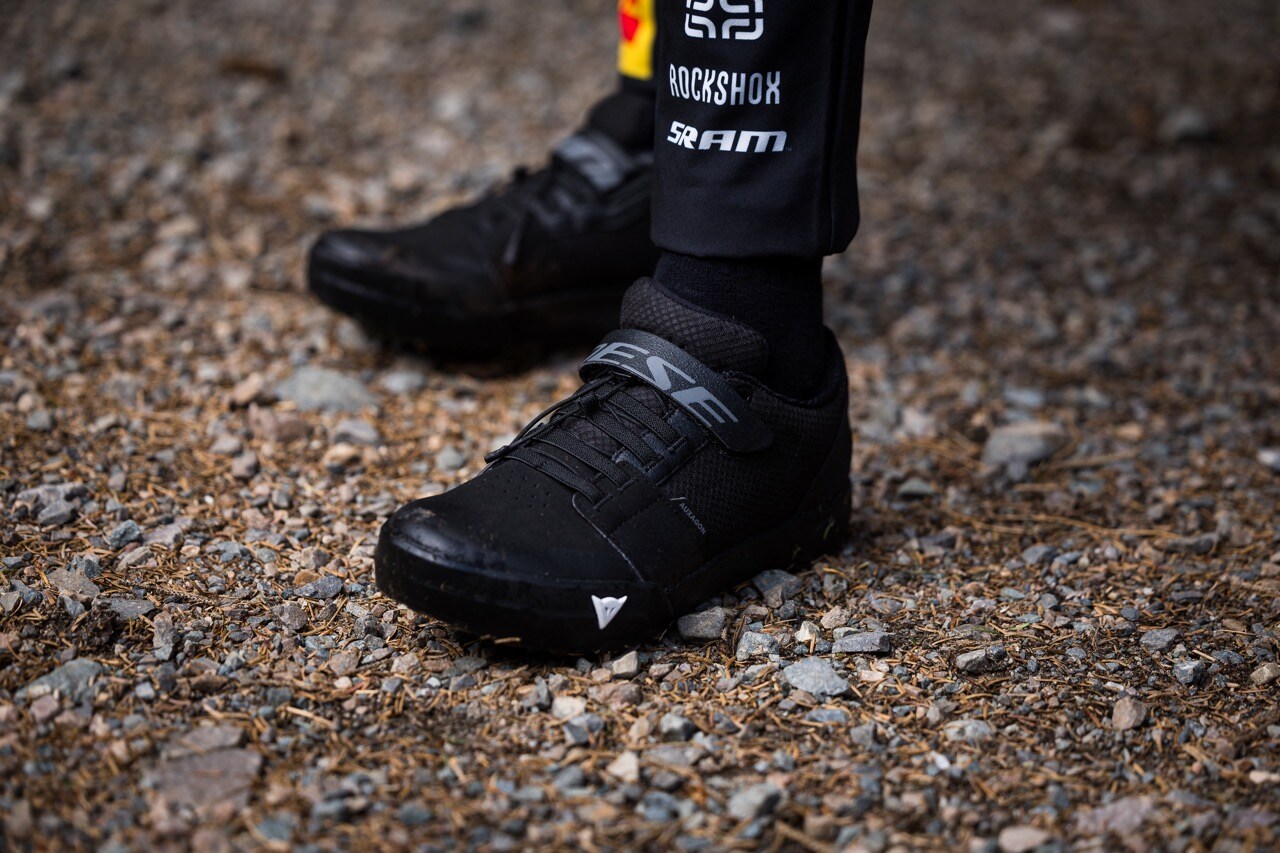The Mountain Bike World Cup is one of the most extreme environments in which you can find yourself riding a bike. Participating athletes are required to be adequately prepared both from the perspective of training and of the physical vehicle and equipment they bring to the race.
Generally, clothing doesn’t require adjustments in the same way that suspensions do, but professional riders need to wear protectors that don’t obstruct their performance in any way – they mustn’t restrain or limit airflow to the body.
So, given these needs, how does a Mountain Bike World Cup athlete prepare in terms of protectors?
First of all, let’s distinguish between the two disciplines our athletes face, Downhill and Enduro. In Downhill, that’s the only direction you ride, the route doesn’t really last a long time, on average around 4 minutes, and you get back up by chairlift or similar, in any case not by pedaling.
Enduro has a very different race format – you face several special stages, mostly but not exclusively downhill, and pedal to get from one to another. It’s therefore essential that the garments worn are also comfortable when pedaling and not too heavy, as they have to be worn for several hours.
In Downhill, not having to tackle long rides, you tend to use rigid protectors with more coverage, even at the cost of carrying a few extra grams. For the upper body, chest and back, Dainese athletes use Rival Chest Guard, a lightweight, ergonomic motocross-derived protector. Rival Chest Guard has rigid outer shells lined internally with soft sponge, is designed around the shape of the body and is ventilated through the many holes allowing air to pass through. Its fit can be adjusted with Velcro bands on the shoulders and in the rib area.
Knees and elbows are covered by Rival Knee Guard R and Rival Elbow Guard R, respectively. They’re protectors from the same family, also with an rigid external shell, capable of absorbing impacts and dissipating the force of shocks. They’re made up of independent plates that allow the joints optimal freedom of movement.
As mentioned, in Enduro you need more lightness to tackle major differences in height. The upper body, including shoulders, is covered by Rival Pro Tee, a jersey made of breathable fabric that incorporates protectors on the sternum, shoulders and spine. They are soft protective panels and are inspired by auxetic materials found in nature. In addition to an effective capacity to absorb impact and good ventilation, they feature great flexibility and still permit excellent freedom of movement.
To protect the knees, Rival Pro Knee is worn to protect the knees. This very light but highly protective knee guard borrows technology from professional MotoGP™ riders’ suits. The base of the protective panel is soft, flexible and breathable, but a steel plate is integrated in the area most subject to impact. The metal dissipates the force of impact, protects against impacts against sharp objects, and helps the knee slide against the ground instead of helping it ‘jam’, with the twisting that could result.
For the elbows, Trail Skins Elbow Guards are available in the Pro version, with Velcro adjustment band, and in the Air version, with only the elastic. These too are very lightweight protectors. They are based on a sleeve in breathable material to which a soft panel with auxetic geometry is sewn, extremely flexible and ventilated.

A fundamental component for establishing the right feel for the bike, and therefore the ground, is the shoe. On the other hand, when riding in a standing position – that’s how you ride downhill – feet and hands are the only points of contact with the physical vehicle. The shoes used by the athletes are Dainese HGMateria Pro, characterized by a Groundtrax-type sole compatible with clipless pedals. Our riders prefer this type of pedal because it allows an otherwise unattainable connection with the bike, and provides superior control at high speeds on uneven terrain and in case of jumps and other maneuvers with the wheels off the ground.
The upper is made of EVA – a solid and protective high-density sponge – with auxetic geometry and there are reinforcements on the toe and heel. The lacing includes a quick-slide lace combined with a series of elastic bands, which together make up the PER-FIT System (Precision Elasticated Retaining). This is all lent further stability with a Velcro band.
At this point it’s clear that an athlete, whatever discipline they compete in, has multiple needs and in some cases they even contrast with one another. They need a garment that’s protective but breathable, that provides coverage but is light. Achieving the perfect balance isn’t easy and requires research and dedication. Once found, however, it’s available to all riders, not only professionals.